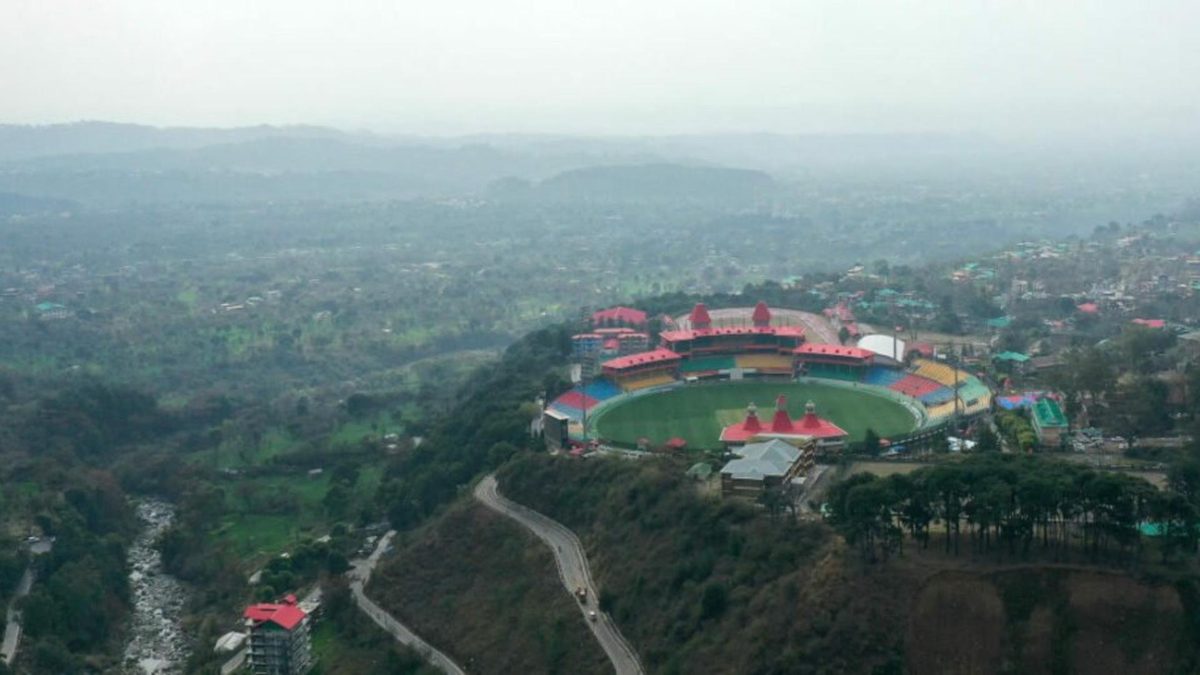
The fifth and final Test of England’s tour of India is set to take place in the picturesque setting of Dharamshala and has the potential to produce conditions that differ vastly from what we have seen across the tour so far.
Subscribe to the Wisden Cricket YouTube channel for post-match analysis, player interviews, and much more.
What happened in the previous Test at Dharamshala?
Dharamshala has only hosted one Test to date, the final match of Australia’s 2017 tour of India. On that occasion, spin played a prominent role in the Test. Kuldeep Yadav took a four-wicket haul on debut as part of a three-man India spin attack; Nathan Lyon took a first-innings five-for; and Ravindra Jadeja and R Ashwin took 6-53 between them as Australia were bowled out for 137 in the second innings.
That said, seamers also found joy. Most notably, Umesh Yadav took a cheap second-innings three-for including the wickets of both Australia openers, while Pat Cummins also took three wickets in India’s first innings.
What’s the climate like?
Dharamshala’s climate is extremely different to what we’ve seen so far this tour. In the week leading up to the Test, temperatures have peaked around 14-15 degrees celsius and have fallen as low as three degrees at night. There has been occasional rainfall as well, and while temperatures are expected to rise closer to the Test match, it is not forecast to reach the 20-degree mark at any point during the contest.
At 1,317 metres above sea level, it is one of the highest Test venues by altitude in the world; high altitudes generally mean that the ball travels quicker through the air, thus theoretically aiding fast bowlers.
What’s happened in recent domestic games?
Looking at recent Ranji Trophy fixtures at the venue, seam can be expected to play a far more prominent role than it has so far this series. In four matches held there this season, there has been one team total in excess of 400 – the 482 Baroda scored in their innings victory over the home side Himachal Pradesh.
Himachal Pradesh regularly field sides consisting of four seamers and in their recent rain-affected draw against Madhya Pradesh, 24 of the 25 wickets to fall in the match were to fast bowlers.
The conditions, which can be closer to those typically found in England rather than India, may well encourage the two sides to veer away from the spin-heavy line-ups we have seen thus far this series. In England’s case, it is possible that England field three seamers alongside the spin of either Tom Hartley or Shoaib Bashir. Gus Atkinson may debut for the tourists; the Surrey speedster, the second-quickest bowler in the England touring party, may be preferred to Ollie Robinson who struggled for rhythm and was down on his usual pace in his first outing of the series in Ranchi.
For India, Jasprit Bumrah is almost certain to return to the XI having been rested for the fourth Test. If India seek to go field three seamers, it may mean that Kuldeep Yadav – who has so far enjoyed an excellent series – misses out to accommodate the extra fast bowler.








